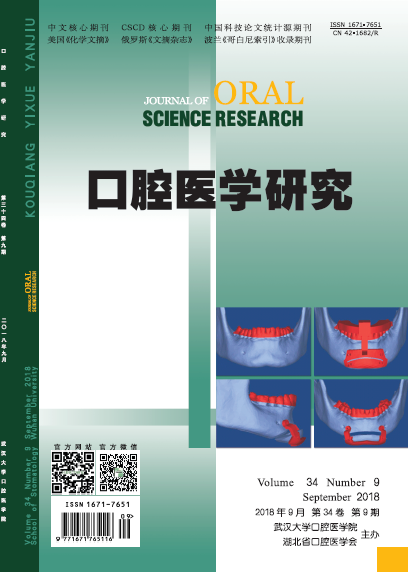|
|
Experimental Study of Bone Remodelling after Maizhuni was Used to Treat Peri-implantitis in Dogs.
WU Pei-pei, Guzelinuer·Abudukelimu, ZHU Ya-ling, YANG Zheng-yao, Nijiati·Tuerxun.
2018, 34(9):
974-978.
DOI: 10.13701/j.cnki.kqyxyj.2018.09.013
Objective: To study the influence of maizhuni on implant-osseointegration interface remodeling of dog peri-implantitis. Methods: Peri-implantitis model of beagle dogs was successful established. Nine beagle dogs were randomly divided into three groups, which were given the same dose of Maizhuni, normal saline, and Amoxcillin capsules and M-etronidazole tablets. After a month,the implant-osseointegration interface remodeling was observed by monitoring the change of PD, PISF, bone defect(DW、DD and BL), and histology slices. Results: There were statistically significant differences in the index of PD, PISF, DW, DD, and BL content among three groups(P<0.05). There was no significant difference between the antibiotic and Maizhuni group in the index of PD, PISF, DW, DD, and BL. The histology slices of Maizhuni group showed that there had a certain amount of osteoblasts around the implant, and newly osteoblasts and bone trabecular were observed in the bone marrow area. Conclusion: Maizhuni can effectively improve the tissue inflammation status when treating peri-implantitis. However, the effect of bone defect repair is not ideal.
References |
Related Articles |
Metrics
|

